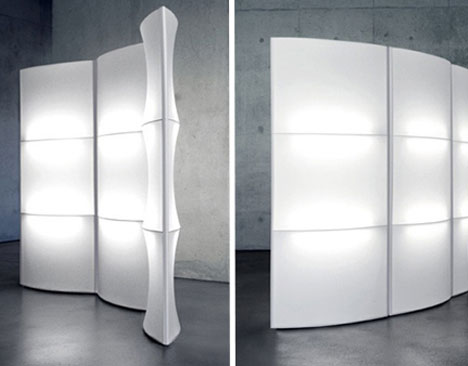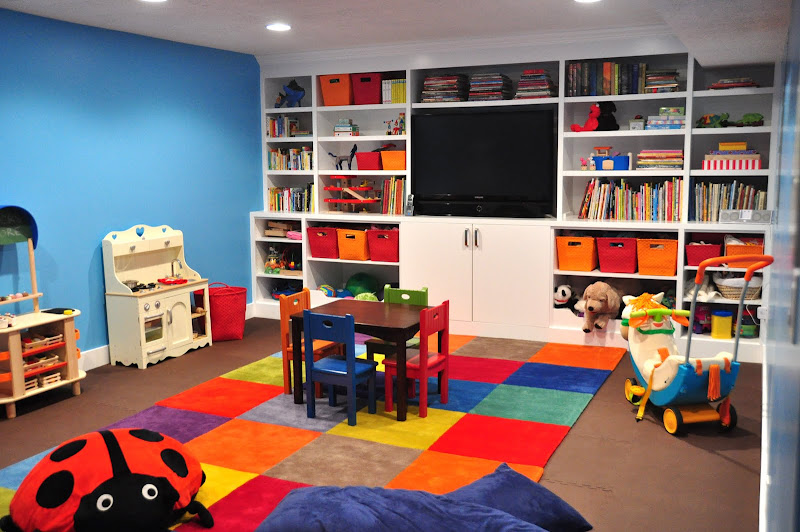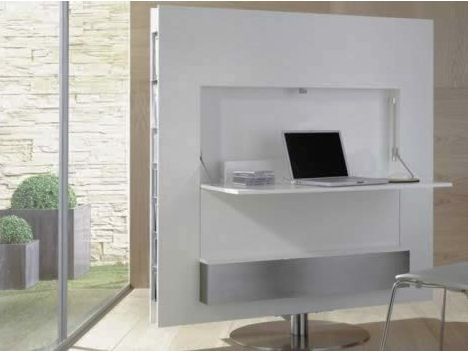Tuesday, May 24, 2011
Friday, May 20, 2011
Ideas for Room Dividers as Temporary office Walls
There are so many different ways in which one can construct room dividers. And a dividers that has been used since the beginning of time is obviously walls. This is a classic way to divide rooms, no matter that you home already has walls, and you can still install walls to divide large rooms. However, you don't have to build the wall you can now actually buy temporary office walls. These temporary walls can be set up and taken down at any time.


One can also paint the existing walls different colors, which will divide a room into various sections. You can paint one wall a certain color and the other wall a matching contrast color; this method will also set a boundary. Hanging room dividers are also functional and decorative. Create your own hanging divider by using beads and shells. You can also create a fabric divider which will separate the living space from the dining space. You can do the same to create a small office space in a corner.
You can also create fabric room dividers using a canvas frame which is made from a lightweight wood. These canvas frames are already made up and all you need do is choose a really nice fabric and then cover the frames. This is really inexpensive way to make a room divider. The canvas comes in various different shapes and sizes and is obtainable at craft shops. You can then cover a few say three canvases per hanging and join the panels vertically together with chains.
In addition you could also make fabric room dividers out of plywood. You need a quarter inch thick plywood and fabric of your choice. Cut the plywood to the desired height and the wrap and staple the fabric on the plywood. Once hang will give a slated effect.
Tuesday, May 17, 2011
Maximize Tax Benefits for Temporary Walls
Everyone has some kind of home office, if you happen to run a business from that home office, it's deductible. But... There are a few important things you need to do to make certain your deduction is provable.
Home offices indicate you have a home-based business. The list above will help you prove your business is viable in case of an audit. These will also improve your ability to make a profit as a workable business.
Sunday, May 8, 2011
Basement Remodeling
When sitting down to decide what to do with extra space in the basement, many options probably come to mind. However, if the house has small children, a playroom may be the ideal thing. Basements often provide blank canvasses to work with and a great playroom can be designed to work well for any needs and budget.
Of course, one of the first things to consider is budget and space. Depending on the budget, a minimal but functional playroom can be created or if the sky is the limit with funds, the children can have a fantasy playroom. The amount of available space will come into play as well. Will the playroom take up all of the basement or just a room or section? After answering these questions, the remodeling can begin.


With a smaller budget, a great basement playroom can be designed, and a key thing to remember, is that the children will be happy with any space and the more organized it is and accessible toys are, the more open to play it will be. Depending on the handiness of the homeowner, walls may be created or taken down without a contractor, or else some temporary walls can be made with curtains or other dividers to create smaller spaces.
Another great saving measure is to do it yourself painting, whether it is one color on the walls or a more creative play on color with perhaps a couple of colors, polka dots, names on the walls, even a mural or chalkboard spot. Many of the craft stores have stick on decals that can brighten the room without the commitment (or artistic talent) of paint. A bright, fun color will make a huge difference. Storage is another key component. Cube storage, open bins, or chest type boxes are great for little hands to have easy access to, and it is important to have spots for everything.
If the budget is bigger, more customized remodeling can be done. Perhaps a new room in the basement can be built so the playroom does not take up the whole thing, or the reverse, a wall or two could be knocked down for more space. With paint, the same idea holds true, fun colors will make the area playful, perhaps a mural with the child's name in it. Built in cabinetry and or desk stations are a great organizational idea. Make sure these are low enough for young children to reach, but also big enough to grow with the children. Cork board walls or chalk board are great to display and create artwork.
For any budget, having kid friendly furniture is necessary. Bean bag chairs for gaming, reading, or small tables for tea parties and puzzle building will work great. With a well thought out basement remodeling, a new playroom can provide children with a space of their own for years to come.
Friday, May 6, 2011
Room Remodel


Do you need more living space but simply do not have the funds to add a new room or two? Perhaps you have a baby on the way or you need a home office. Or maybe two kids sharing a room need their own space. The answer may literally be right under your nose!
There are numerous ways that you may be able to inexpensively create additional living areas from unused spaces.
1. Attic remodel - do you have an unfinished attic that could be turned into a bedroom or home office? You may need to strengthen the floor and improve lighting and ventilation.
2. Basement remodel - what are you doing with your basement? Again, lighting and ventilation will need to be planned, but your walls and floor are already there.
3. Closet - do you have a spare closet or one you could clean out? Convert this into a home office perhaps, or if large enough, a nursery.
4. Garage remodel - the structure is already in place, it may just need cleaning out. If you have a large garage, you could possibly partition it enabling you to store garden implements or even a car, as well as have your games room or home office.
5. Divide a room - If you have a large room that you do not use entirely, why not put up temporary walls/ temporary office walls or room dividers. These are perfect for renters too, because they can be removed when you leave. Temporary walls come with doors so you can easily move around.







